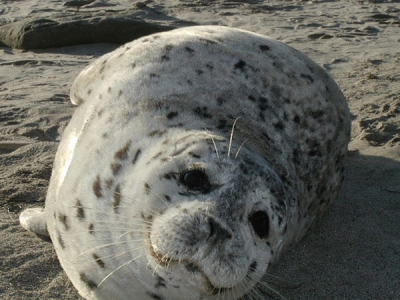Pinnipeds include seals, sea lions and walruses. They are semi-aquatic mammals that divide their time between foraging at sea and coming ashore to rest, mate, give birth, suckle their young, and/or molt (shed their hair). Pinnipeds are characterized by a coat of fur, whiskers, and fore and hind flippers. They are derived from a bear-like ancestor thought to have lived about 23 million years ago.
There are two families of Pinnipeds that occur in Oregon. Phocids (seals) do not have external ear flaps, they have short front flippers with claws on their ends, and move on land by humping along on their bellies. Otariids (sea lions and fur seals) do have external ear flaps, long front flippers, and the ability to rotate their hind flippers under their pelvis to walk on all fours on land.









